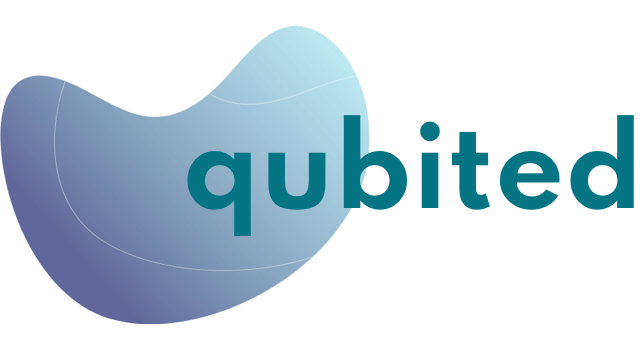Introduction
Creating a highly responsive UI is prominent in front end web development today. This approach derives better ROI and business growth, allowing more users to interact with your website. Moreover, the demand for front-end developers is rapidly rising as businesses have started to focus on creating optimized web platforms that centralize user preferences.
More than 48% of professional developers prioritize using the React framework for front-end development. This percentage is a striking reminder for technology professionals to build a strong career in front-end web development.
This blog will help you acknowledge the ten best front-end web development tools available for front-end developers, helping them build a toolkit that enhances user interface performance and offers better retention rates to businesses that leverage digital platforms.
What Are Front-End Web Development Tools?
Front-end web development tools enable front-end developers to build website layouts and user interfaces more efficiently. These tools streamline the development process by reducing the time spent on repetitive tasks, allowing developers to focus on more complex aspects of their projects.
Several tools are available for specific needs in front-end development, including those for HTML, CSS, and JavaScript, as well as code editing, deployment, prototyping, wireframing, and security testing. When selecting a tool, developers should focus on factors that meet their specific requirements, like functionalities offered, ease of use, operating system compatibility, and pricing.
Front-end frameworks play a crucial role in this web development ecosystem by providing pre-built files designed for styling and structuring websites. These frameworks come with ready-to-use components like navigation menus, buttons, and typography, significantly reducing the need to code these elements from scratch. This feature-rich capability enhances efficiency and ensures a more consistent and polished digital product.
10 Best Front End Web Development Frameworks
Front-end development, also known as “CSS frameworks,” is a package that includes a pre-written set of codes in files and libraries. These packages provide the base for website development while standardizing final design revisions. Here are the ten best front end development frameworks that developers might find handy.
1.Angular
Angular is a popular Typescript-based UI framework launched by Google in 2016. It addresses the increasing demands of technology in front-end web development.
Unlike React, Angular offers two-way data binding, ensuring real-time synchronization between the model and view and allowing instant updates. Ideal for web or mobile app development, Angular enables front-end developers to create progressive web applications and single-page applications.
Prominent companies such as Xbox, BMW, and Forbes utilize Angular for their applications. While learning Angular can be challenging due to its complexity, extensive documentation exists, albeit often difficult to navigate.
Its advantages include simplified coding, a component-based architecture, a quick-to-develop ecosystem, and more extended deployment of web apps across multiple platforms.
2.Node Package Manager(NPM)
NPM, or Node Package Manager, helps developers manage JavaScript packages efficiently and simplifies the installation and management of reusable code modules essential for front-end development projects.
With a straightforward command like “npm init,” you can quickly create a “package.json” file to identify your project. You can also seamlessly publish, explore, install, and build Node programs using npm.
Key features include:
- Auto-Completion: Enhances command line usage.
- Symlink: Installs local packages and links them to existing applications.
- Version Control: Allows precise version specification to ensure consistency.
NPM supports over 470,000 packages, making it a robust resource for front-end web developers. However, potential security vulnerabilities within these reusable code packages require prior attention.
3.Chrome DevTools
Chrome DevTools is a vital front-end debugging toolkit embedded in the Google Chrome browser. It empowers front-end web engineers to debug, profile, and edit the Document Object Model (DOM) and styles in real-time.
Key functionalities include:
- Live Editing: Instantly inspect and adjust HTML and CSS, empowering website performance efficiency.
- Network Analysis: Track network requests while generating detailed analysis of factors such as web page load times, resource sizes, and response headers.
- Performance Insights: Detect runtime issues with the Timeline feature and assess local storage.
With JavaScript debugging and testing responsiveness capabilities, Chrome DevTools is essential for crafting efficient and engaging web experiences that enhance customer response while supporting regular updates.
4.Visual Studio Code
Visual Studio Code (VS Code) is a free, open-source, and cross-platform code editor built by Microsoft. This text editor is renowned for its lightweight performance and extensive functionality, which supports Windows, macOS, and Linux.
According to the Stack Overflow 2023 Developer Survey, its popularity surged from 75% to 81% among developers. VS Code is ideal for various development tasks, including web, cloud, and mobile applications.
This front-end development tool has a vast array of extensions that empower web developers to focus on seamless coding practices.
Key features include:
- IntelliSense: Offers dynamic code assistance and context-aware suggestions.
- Integrated Git commands: VSCode allows front-end web developers to analyze changes in any file or file set with built-in Git integration commands.
- Extensive Extensions: Allows customization for different programming needs.
- Robust Debugging: A powerful interface allows an immersive debugging practice.
This code editor supports multiple languages, such as JavaScript, TypeScript, and Python, making it a top choice for front-end developers. With a user-friendly interface and built-in features and tools such as syntax highlighting and code refactoring, it’s perfect for both beginners and experienced developers.
5.Sass
Sass, which stands for Syntactically Awesome Stylesheets, is a preprocessor that incorporates additional features, such as variable creation, simplified nesting, selectors, mixins, etc., with the traditional CSS.
Sass provides a seamless process of handling stylesheets to front-end developers, allowing them to create modern and flexible color schemas for their web applications. One of the most striking features of Sass is that it allows web developers to share designs across projects. Popular businesses that support Sass include Bourbon Company, Susy, etc.
6.Grunt
Grunt is a widely used JavaScript task runner tool. Launched in 2012, it is essential for front-end developers seeking to automate repetitive tasks. It enhances productivity by automating processes like compilation, unit testing, minification, and linting.
Grunt features a robust ecosystem with over 6,000 plugins, allowing developers to customize their automation needs effortlessly. Using a command-line interface, Grunt simplifies task execution, making routine operations seamless. It also offers the ability to create your own plugin to fulfill front-end development anomalies at the personal level.
Additionally, it is important to ensure that Node.js npm is updated to install Grunt and its plugins. Major companies like Adobe, Twitter, and Mozilla rely on Grunt to streamline their workflows, making it a valuable tool in web development.
7.Figma
Figma is a cloud-based design tool that offers a suite of powerful features, including vector editing, prototyping, and animation. It is a collaborative web-based design tool transforming how design and development teams interact.
Its cloud platform services enable real-time collaboration on user interface projects for both mobile and web applications. Frontend engineers can quickly inspect design elements, extract assets, and communicate effectively with designers.
With robust features like vector editing, prototyping, animation, and design versioning, Figma facilitates the creation of high-fidelity designs and interactive prototypes.
Additionally, it supports various plugins for enhanced functionality and is accessible across different operating systems, ensuring compatibility. Version history tracking allows designers to revert to previous iterations, further streamlining the design workflow.
8.Bootstrap
Bootstrap is a popular CSS, JavaScript, and HTML framework widely used in front-end web development for creating mobile-first, responsive websites and web applications. It supports all major browsers and provides a variety of free and professional templates, making it a go-to choice for front-end developers.
Key features include:
- LESS and CSS Support: Offers styling flexibility through LESS (Linear Style Sheets) and CSS files.
- Responsive Grid System: Simplifies layout creation with its 12-column grid.
- Customization: Easily create responsive or fixed grids tailored to project needs.
- Utility Classes: Facilitate the development of user-friendly interfaces.
- Pre-Built Components: Navigation bars, modals, and forms for quick integration.
- Powerful Plugins: Built on jQuery, enhancing functionality for various tasks.
According to the W3Techs Survey, over 17% of websites utilize Bootstrap, highlighting its effectiveness. Additionally, it’s built on Sass, offering enhanced styling capabilities. This framework also integrates well with other tools and libraries, making it suitable for modern front-end development.
For front-end web developers, Bootstrap provides essential resources to streamline the design process, create visually appealing applications, and ensure a mobile-friendly experience across devices.
9.Git and GitHub
Git is a version control system(VCS) that allows front-end developers to analyze changes made to the code repository. Moreover, it creates a collaborative environment for web app developers to work together on a single project, offering a large community.
GitHub is an open-source online platform for hosting and sharing Git repositories. It provides web developers with code issue tracking, feature suggestions, pull requests, and automated task management within integrated developer environments.
Github deploys Git for version control and allows web developers to check or revert to old changes made to any web application coding. Moreover, it incorporates with various CI/CD tools empowering automated testing and project deployment workflows.
10.Lighthouse
Lighthouse is an open-source, automated tool designed to enhance the quality of web pages. It audits crucial areas such as performance, accessibility, SEO, and best practices. Moreover, its top Features include:
- Conducting thorough audits on web pages.
- Offering actionable reports based on real-world performance metrics.
- Identifying and recommending improvements for accessibility issues.
- Seamlessly integrating with Chrome Developer Tools.
As a vital resource for front end web developers, Lighthouse empowers them to optimize web performance and improve user experience. Whether refining an existing project or launching a new one, this tool is essential for creating high-quality, user-friendly websites.
Conclusion
Looking towards 2025, the landscape of front-end web development is evolving rapidly, driven by the need for exceptional user experiences and robust functionality on the Internet.
The tools we have highlighted—ranging from frameworks like Angular and Bootstrap to essential resources like GitHub and Lighthouse—offer front-end developers the power to create stunning, responsive, and efficient web applications.
By leveraging these tools, developers can streamline their workflows, enhance collaboration, and deliver better products that meet user expectations and fulfill business needs. Embracing the right front-end development tools is crucial for anyone looking to thrive in this competitive field.
How Qubited Can Elevate Your Front-End Web Development Experience?
At Qubited, we specialize in crafting exceptional web app designs and development solutions tailored to your business needs. Our expertise goes beyond simply hiring a front-end developer; we understand that creating top-tier user interfaces is an intricate process that requires a strategic approach both at the design and development levels.
By partnering with Qubited, you gain access to a team dedicated to designing and implementing the most engaging UI layouts that enhance user experience and drive organic business results.
Ready to transform your application development project? Contact us for a free consultation about web app services. We’re eager to discuss your unique challenges and collaborate on the best possible solutions that meet your needs!



